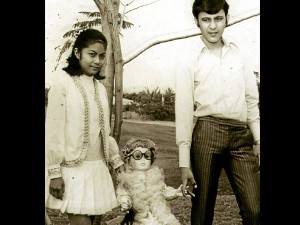
Why Nora Aunor?
I might simply say, “Because she’s a superb actress, and a good singer.” Few will disagree with that, even the Vilmanians, and among those who disagree, it would probably be because of some class bias, as in, “Yeah yeah she’s good, but she’s so… bakya.”
But precisely. Nora helped to transform the bakya/burgis dichotomy. It used to be that the burgis (from “bourgeoisie,” mutated to mean upper classes) and the lower class bakya kept to their side of the fence, but partly through Nora, the lines have blurred.
I came of age on The Beatles, The Rolling Stones and, in mellower moments, Joan Baez, Judy Collins, Bob Dylan. Nora Aunor was on the periphery of my consciousness, like Filipino movies which were then considered fodder for the masa.
And yet, one couldn’t help but sit up and take notice of Nora. Here was this rising star who didn’t fit into the mold. Unlike other aspiring actresses, she was short and dark and truly came from the masses.
Nora’s life wasn’t just a rags-to-riches saga but a fairy tale with princes and villains. Consider how she started out in her native Iriga, Camarines Sur, competing in a singing contest at age 11 and winning the grand prize of P20 – just what she needed to help pay an elder sister’s tuition.
She went on to Naga and then to Manila to win more amateur contests, changing her name in the process from Nora Cabaltera Villamayor to Nora Aunor, the name of her aunt and uncle who became her de facto guardians. In 1967, aged 14, Nora won the national championship in “Tawag ng Tanghalan.” The following year, Alpha Records signed her up.
And so she crooned her way to stardom. How could you pretend she didn’t exist when her voice was always coming in from someone’s radio. Was it the neighbor’s? Was it your household helper’s? Oh my, it’s my own Lola!
It was a voice that changed through the years as Nora herself was transformed, from the kawawa (pitiful) waif, to the lovestruck but more confident teeny-bopper, to the self-assured adult.
Then she broke into the movies, churning out one film after another while the rumor mills kept up with the gossip, linking her to frequent co-star, Tirso Cruz III, the “Pip” in the iconic “Guy & Pip” love team. Yet for all the rumors about Pip, she ended up marrying actor Christopher de Leon, her co-star in “Banaue.” That marriage challenged class barriers, and the bakya/burgis distinction.
From song-and-dance routines, she moved on to drama with “Himala” in 1983. The movie about faith healers was named by CNN as one of the best Asian films ever made. “Walang himala…!” (There is no miracle!), the character Elsa tells the expectant crowd, the phrase becoming so entrenched into local lexicon that it has been used in commercials and comedy shows.
The following year, Nora did “Merika,” about a Filipino nurse working in America. Earlier, in 1976, she had also played a nurse aspiring to work in the US in “Minsa’y Isang Gamu-Gamo.” On the eve of her trip, her brother is shot dead by an American soldier in Clark who claims he had mistaken the boy for a wild pig. “My brother is not a pig!” Nora’s character declares with defiance, the phrase again evolving into a popular punchline in local jokes.
The two films were powerful social commentaries, and only Nora could have played out our collective tensions, anxieties and contradictions. The actress continued doing movies that touched on national concerns, notably “DH” (Domestic Helper) in 1993 and “The Flor Contemplacion Story” in 1995, about another DH in Singapore.
You just couldn’t escape Nora. Some years back in a small bakery while buying some pan de coco, I found an unfamiliar item: bread with a chocolate drop on it. “Pan de Nora,” the storekeeper told me, surprised I was even asking. I realized later that most bakeries carried this bread, meant to commemorate Nora’s famous mole.
It didn’t end there. Gloria Macapagal-Arroyo, running for president in 2004, had posters plastered throughout the country with her looking like Nora, down to that famous facial mole.
La Aunor was art imitating life, but later her life went on to imitiate art. Like the nurse in “’Merika,” she too left to live in the land of milk and honey, occasionally coming home, only to quietly slip back to the US. Then one day in 2005 she made the headlines again after being intercepted at the airport with 8 grams of shabu (metamphe tamine). She later did 18 months of drug rehab and was spared imprisonment.
My initial reaction was, “Oh no, to go into drugs when you’re young… even Rizal tried marijuana in his teens. But why in mid-life? Why not ballroom dancing?”
But fans have been more forgiving. After all she’s been through, her meteoric rise to stardom and a life that knew no privacy, followed by a slack and a fading from public memory, drugs probably offered some comfort.
She’s home now, a balikbayan, too early for retirement and certainly with enough time for a comeback of sorts. But she’s low-key about it all, much like her fans, now senior citizens or close to it. May we all, burgis and bakya, age as gracefully.